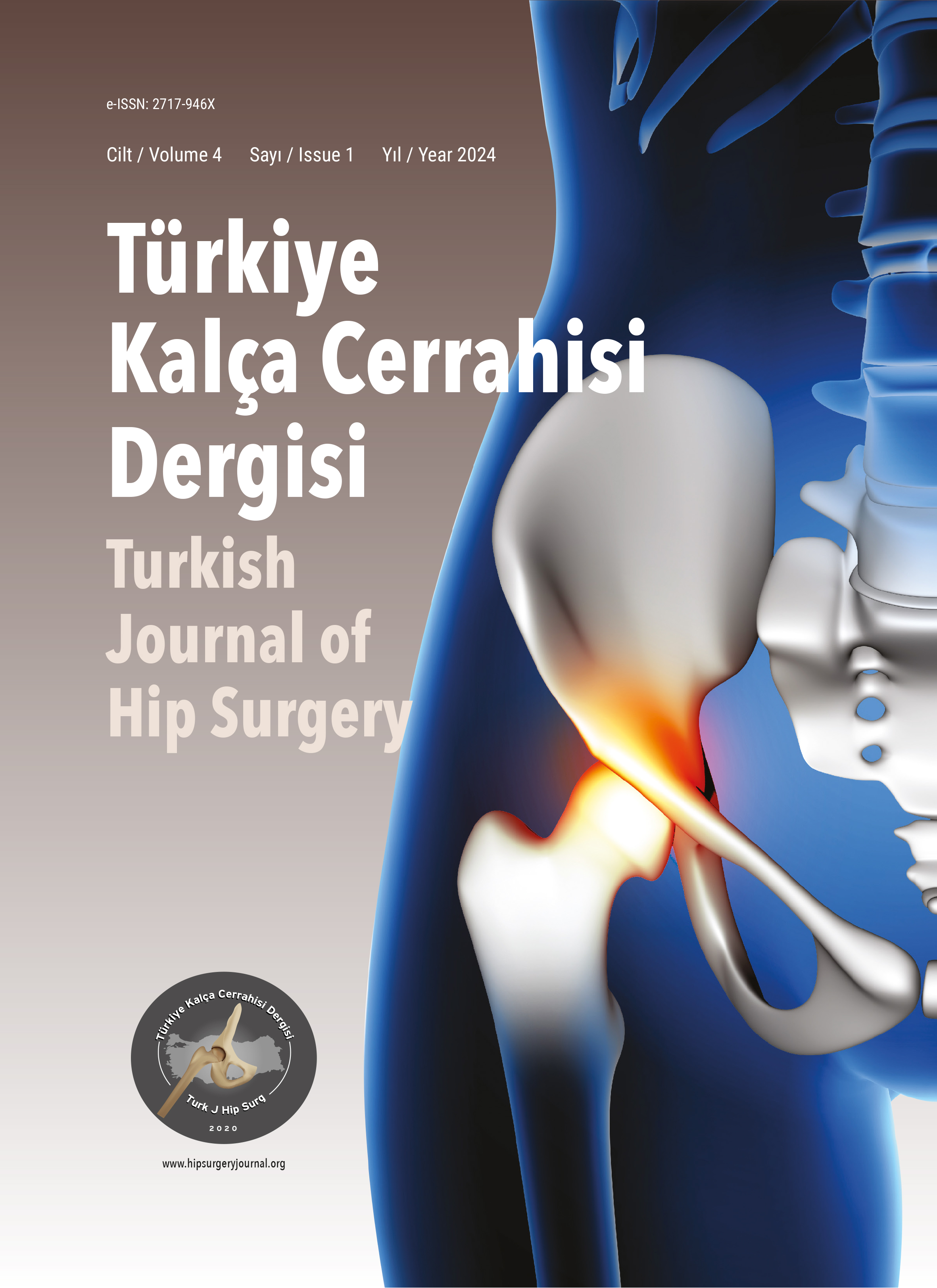
Functional Outcomes of Soft Tissue Release Surgery in Advanced Legg-Calve-Perthes Disease
Vadym Zhamilov, Can Doruk Basa, İsmail Eralp Kaçmaz, Ali Reisoğlu, Haluk AgusDepartment of Orthopaedics and Traumatology, Tepecik Training and Research Hospital, İzmirObjectives: This study aimed to investigate the functional and radiological outcomes in LeggCalvéPerthes Disease (LCPD) patients undergoing soft tissue release surgery.
Materials and methods: Ten children (11 hips) diagnosed with LCPD who had previously been conservatively treated with movement limitation were included in the study. Patients in the late fragmentation period of the disease were evaluated with arthrography in hip-neutral, abduction, abduction/internal rotation, and adduction positions using radioscopy. Dynamic examination using arthrography was performed to determine whether the patient had any bone pathologies (hinging). For patients with no bone pathology, adductor longus and iliopsoas tenotomy and inferior capsulotomy were performed. Sitting was allowed immediately following surgery, and mobilization with support was allowed after the wound had healed. Patients were followed up at regular intervals. Functional assessments of patients were made using the Harris hip scoring system. Evaluation of radiological imaging was carried out according to the Stulberg classification.
Results: The mean age of patients was 10.9 (615) years. According to the Herring lateral pillar classification, one patient was type B, three were type B/C, and seven were Type C. At the 12-month follow-up, the active range of motion was increased, and hip pain decreased. At the final follow-up (patients followed for 15 years; mean: 3 years), one patient was evaluated as type II, seven as type IV, and three as type V according to the Stulberg classification. The mean Harris hip score was 92.3.
Conclusion: Soft tissue release surgery performed as tenotomy in LCPD patients had no effect in terms of radiological characterization, but had positive functional impacts.
Keywords: LeggCalvePerthes disease, soft tissue release, Harris hip score
İleri evre Legg - Calve - Perthes hastalarında yumuşak doku gevşetme ameliyatının fonksiyonel sonuçları
Vadym Zhamilov, Can Doruk Basa, İsmail Eralp Kaçmaz, Ali Reisoğlu, Haluk AgusTepecik Eğitim ve Araştırma Hastanesi, Ortopedi ve Travmatoloji Kliniği, İzmirGi̇ri̇ş ve Amaç: Bu çalışmanın amacı, yumuşak doku gevşetme ameliyatı uygulanan Legg-Calvé-Perthes (LCPD) hastalarında fonksiyonel ve radyolojik sonuçları araştırmaktır.
Yöntem ve Gereçler: Hareket kısıtlılığı nedeniyle konservatif olarak tedavi edilmiş LCPD tanısı almış 10 çocuk (11 kalça) çalışmaya dahil edildi. Geç fragmantasyon dönemindeki hastaların kalçaları artrografi ile kalça nötral, abduksiyon, abduksiyon/iç rotasyon ve adduksiyon pozisyonlarında değerlendirildi. Herhangi bir kemik patolojisi (menteşe) olup olmadığını belirlemek için artrografi ile dinamik muayene yapıldı. Kemik patolojisi olmayan hastalara adduktor longus ve iliopsoas tenotomisiyle birlikte inferior kapsülotomi uygulandı. Ameliyattan hemen sonra oturmaya izin verildi ve yara iyileştikten sonra destekli mobilizasyona izin verildi. Hastalar ameliyattan sonra ortalama 3 (1-5) yıl takip edildi. Hastaların fonksiyonel değerlendirmeleri Harris kalça skorlama sistemi kullanılarak yapıldı. Radyolojik değerlendirilme Herring ve Stulberg sınıflamasına göre yapıldı.
Bulgular: Hastaların ortalama yaşı 10.9 (6-15) yıldı. Herring lateral pillar sınıflamasına göre bir hasta tip B, üç hasta tip B/C ve yedi hasta Tip C idi. 12 aylık takipte aktif hareket açıklığının arttığı ve kalça ağrısının azaldığı görüldü. Son kontrolde çekilen röntgenlerde Stulberg sınıflamasına göre bir hasta tip II, yedi hasta tip IV ve üç hasta tip V olarak değerlendirildi. Ortalama Harris kalça skoru 92.3 idi.
Tartışma ve Sonuç: LCPD hastalarında yumuşak doku gevşetme ameliyatının radyolojik olarak herhangi bir etkisi olmadığı ancak olumlu fonksiyonel etkileri olduğu sonucuna varıldı.
Anahtar Kelimeler: Legg- Calve- Perthes hastalığı, yumuşak doku gevşetme, Harris kalça skoru
Manuscript Language: English









